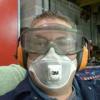after my mini developed a cough last week i did a quick compression test before messing with anything, just to be sure the head gasket hadnt gone between 2&3 cylinders, fortuneatly it showed 165-170 across all 4 cylinders.
with this i was both pleased, and intrigued. having worked out a month or so ago that my engine, with its dished pistons has got a CR or something like 8.5:1, i expected the pressure shown on the gauge to be much lower than 165psi.
now, at the risk of looking like a right twonk, the 2 factors are actually closely related arnt they? a higher compression ratio will obviously show a greater pressure in psi on the gauge? wont it?
if this is the case.....
what would be a typical reading for a turbo'd engine with 8.5:1?
what would be a typical reading for a higher spec n/a engine at 10.5/11:1?
Relationship Between Theoretical Cr And Actual Psi On Compression Test?
Started by
cradley-heathen
, Apr 30 2012 06:42 AM
5 replies to this topic
#1

Posted 30 April 2012 - 06:42 AM
#2

Posted 30 April 2012 - 07:28 AM
I reckon thats going to vary depending on what cam,state of the cylinders and valves,oil coming up actually raises it too and of course the guages will not all read the same as each other. People will no doubt say what theirs are and an average will be able to be arrived at. So mine is at 11:1 and reads 225 psi
#3

Posted 30 April 2012 - 09:59 AM
The PSI/bar reading on a compression gauge does relate to the actual compression however the mathematical relationship between the two is rather complicated and has a number of variables which relate to atmospheric pressure, altitude, temperature etc, so is not worth the effort on trying to work it out..
The best use of a compression gauge is to check the equality of the compression in each cylinder, relative to each other.
The best use of a compression gauge is to check the equality of the compression in each cylinder, relative to each other.
#4

Posted 30 April 2012 - 12:02 PM
This is a very good question.
As already mentioned they are related however the relation ship is a complicated one for the reasons mentioned above and for these further reasons:
Valve timing both cam type and where it is timed in, rocker ratio, cranking speed.
Having and engine with 9.75:1 cr with a road type cam would give a pressure reading of 190 to 200psi. Change the cam for a rally type cam and changing nothing else would give you a figure of more like 160psi. Its understanding the cranking compression readings that will help you build a successful road engine. With Unleaded fuel a road engine is happy at around 180 to 190ps. Fitting a milder cam would usually mean dropping the static CR to compensate. it is this single fact that ruins most miss guided engine builds. CR and cam have to complement each other, and more modern cams need lower static CR's to get the best from them that older profiles.
Modern Road cams and 10.5:1 CR's are not the way forward for best all round results.
So to answer your question, yes a higher Static CR will show a higher cranking compression, however you cannot say what sort of figures as the variable are just too many. A low static CR engine and a mild cam will give high Cranking compression readings. A high static compression and a mild cam will give too higher cranking compression readings. A high Cr and a cam selected to suit the CR will still give the required 180 to 190psi on cranking an hence good low speed output with a big gain all the way up the power curve.
AC
As already mentioned they are related however the relation ship is a complicated one for the reasons mentioned above and for these further reasons:
Valve timing both cam type and where it is timed in, rocker ratio, cranking speed.
Having and engine with 9.75:1 cr with a road type cam would give a pressure reading of 190 to 200psi. Change the cam for a rally type cam and changing nothing else would give you a figure of more like 160psi. Its understanding the cranking compression readings that will help you build a successful road engine. With Unleaded fuel a road engine is happy at around 180 to 190ps. Fitting a milder cam would usually mean dropping the static CR to compensate. it is this single fact that ruins most miss guided engine builds. CR and cam have to complement each other, and more modern cams need lower static CR's to get the best from them that older profiles.
Modern Road cams and 10.5:1 CR's are not the way forward for best all round results.
So to answer your question, yes a higher Static CR will show a higher cranking compression, however you cannot say what sort of figures as the variable are just too many. A low static CR engine and a mild cam will give high Cranking compression readings. A high static compression and a mild cam will give too higher cranking compression readings. A high Cr and a cam selected to suit the CR will still give the required 180 to 190psi on cranking an hence good low speed output with a big gain all the way up the power curve.
AC
#5

Posted 30 April 2012 - 08:45 PM
i see, im glad i wasnt completely barking up the wrong tree.
just to stress the point i wasnt asking this question so as to attempt to calculate my compression ratio, i have already calculated this after measuring everything with the head off some time back. i was just interested to see what the relationship between the 2 figures is.
as ever thanks for the response guys, i feel a little more informed now!
just to stress the point i wasnt asking this question so as to attempt to calculate my compression ratio, i have already calculated this after measuring everything with the head off some time back. i was just interested to see what the relationship between the 2 figures is.
as ever thanks for the response guys, i feel a little more informed now!
#6

Posted 19 February 2013 - 12:13 PM
Sorry to resurect however I have rebuilt my 1330 engine with a Kent 286 and the compression pressure is 200PSI, is this too high?
Edited by Petro1head, 19 February 2013 - 12:14 PM.
1 user(s) are reading this topic
0 members, 1 guests, 0 anonymous users
















